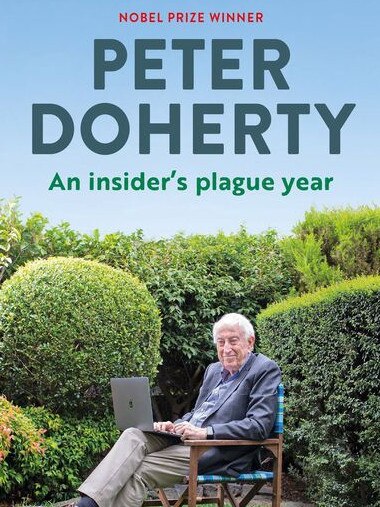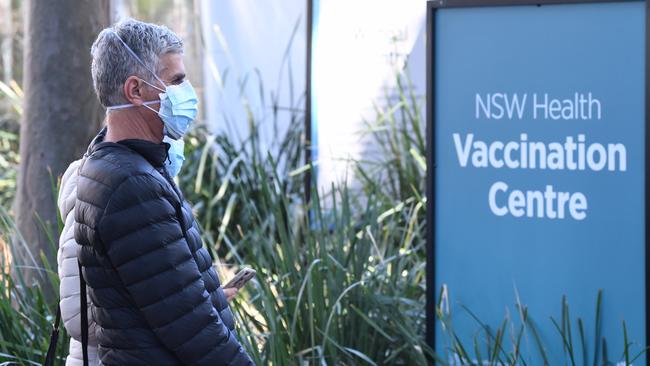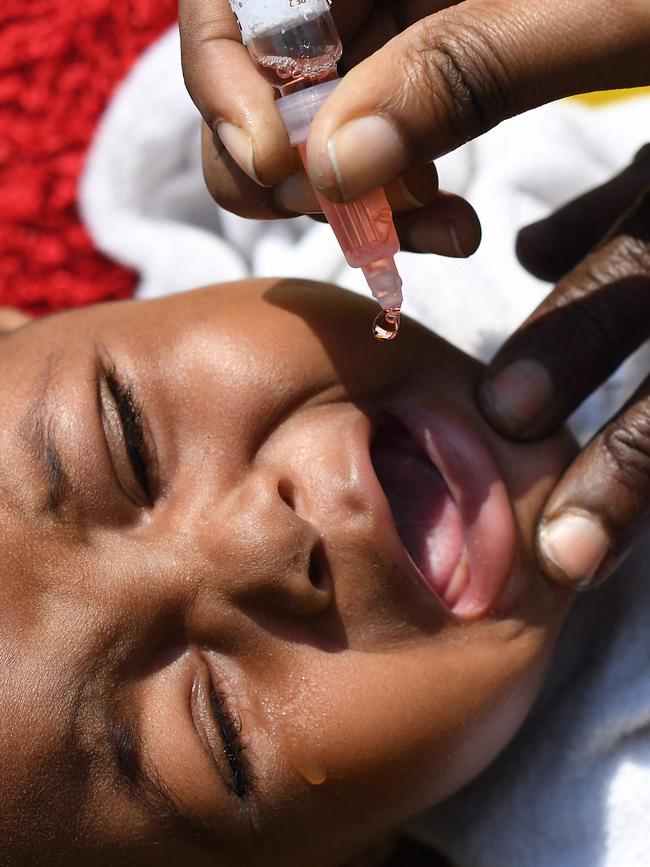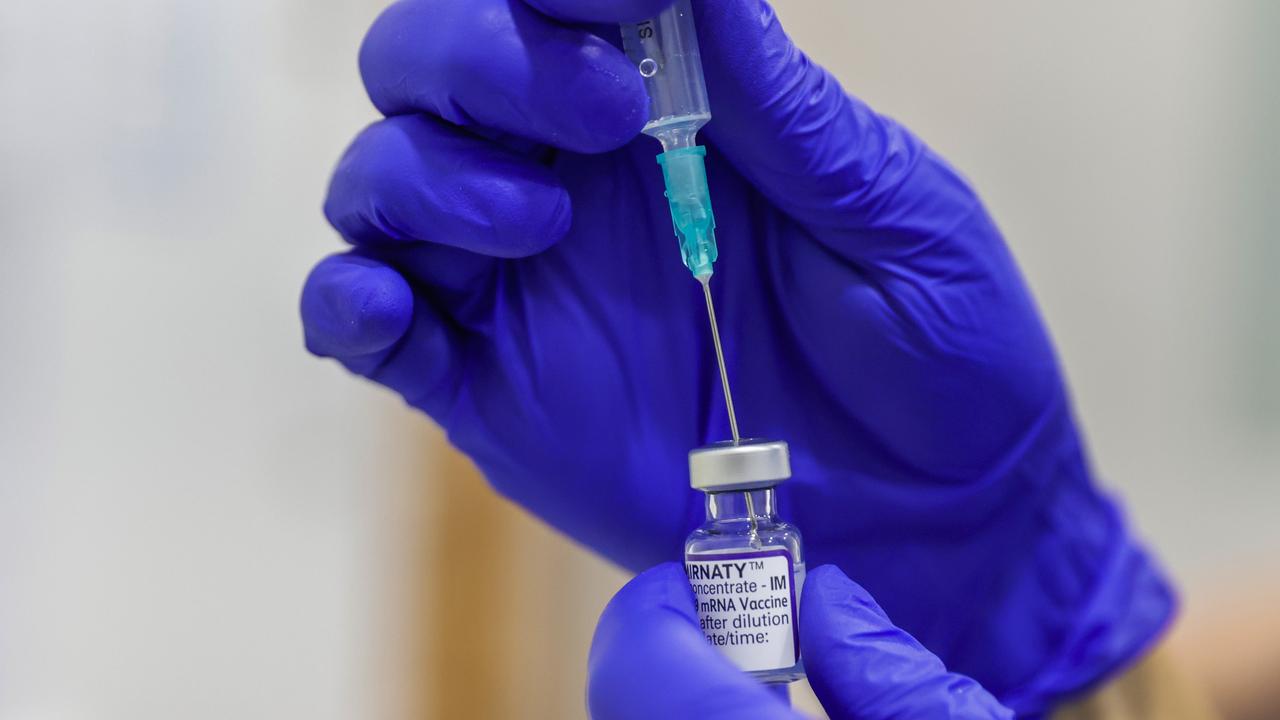How long will it take Covid vaccines to make an impact on the pandemic?
Australia’s Nobel Laureate Professor Peter Doherty believes the best way to get through the Covid pandemic is vaccination and new treatments — but it won’t fully happen anytime soon.
NSW Coronavirus News
Don't miss out on the headlines from NSW Coronavirus News. Followed categories will be added to My News.
One of Australian’s most eminent brains on Covid believes in five years the pandemic will be well and truly behind us — but it is dependent on vaccines and upcoming treatments.
Nobel laureate and Covid authority Professor Peter Doherty, whose namesake Doherty Institute was the first in the world to isolate the SARS-CoV-2 virus that causes Covid, said he was optimistic the pandemic will disappear but it will need up to 80 per cent of us to be vaccinated.
“It’s uncertain, I’m trying to get people to get vaccinated because the safest we will be is if we can get 80 per cent vaccinated and suggesting we need to look at some treatments,” Prof Doherty said.

“So if we not only have most people vaccinated but if someone is vulnerable and tests positive, we give them a pill they can take.”
As Prof Doherty writes in his upcoming book, An Insider‘s Plague Year, the Delta variant is more successful at multiplying, which is why it has become the dominant strain, but the barrier that vaccine-induced antibodies put before Delta is our great hope.
“What we are doing is putting in front of it a barrier, and that barrier is antibodies in vaccinated people. I’m hoping once this virus hits the hurdles, the antibodies, it’s going to be slowed down and become less virulent or not take over because it’s not multiplying that well.”
The great risk is if an immune escape variant develops to get around vaccines, like the influenza viruses do.
“Some people think it’s going to escape like flu does but I’m not convinced,” he said.
Historically there are very few parallels that can be drawn to give a guide to how long we will have to endure Covid he said. The Spanish flu petered out after three years, as it became less virulent.

The original SARS from 2002 killed about 10 per cent of those infected then died out and while polio and measles are contained with vaccination, and even eliminated in many countries, Covid was a caused by a trickier virus.
“The polio vaccine is a very effective but it’s a much easier virus to handle than this one. Polio, like Covid, you get infected by your nose, mouth and multiplies and you don’t know you’ve got it, it comes in via the respirator tract but then it does what Covid does, it gets in the blood.
“Covid is systemic. Vaccines do really well with viruses that don’t change much and that is why the Covid vaccines are so good, they are stopping the blood phase of this virus and stopping infection in the heart and the kidneys and blood vessels walls and the horrible clotting problem, it is a hideous virus,” he said.

What is apparent is the proliferation of coronaviruses jumping species into humans in recent history.
“We had two coronaviruses in the population prior to 2000, the common cold coronas, those common cold ones, we could have had something like this 1000 years back that brought those over, but we’ve had two more of these common cold ones come across since 2000 and they are not causing a problem, we’ve had five new ones since 2000, so what is happening? I think it is large scale passenger travel out of China because these live animal markets are really dangerous. We know the original SARS came out of an animal market, we’ve got strong suspicions this happened here, but we don’t know for sure.”
The key out, he says, it a vaccination rate of 80 per cent.
“I think if we can get 80 per cent vaccinated by the end of this year, or early next year we should hit 80 per cent if the vaccine supply holds up and get some treatment drugs, one from Pfizer called Molnupiravir, it is an antiviral like Remdesivir. If I was the Australian government I’d be looking very seriously at this drug,” he said.
Century of pandemics and viruses
1918: The Spanish flu
The 1918 influenza pandemic hit a war-weary population with the H1N1 virus with genes of avian origin.
An estimated 500 million people, or a third of the world’s population became infected with it and it claimed an estimated 50 million lives worldwide.
With no vaccines or antibiotics to help with secondary infections like pneumonia, isolation, quarantine, hygiene, use of disinfectants, and limitations of public gatherings were relied on. The virus petered out by 1921.
1957: Asian flu
In February 1957, a new influenza A (H2N2) virus emerged in East Asia, triggering the “Asian flu” pandemic that killed an estimated 1.1 million worldwide.
US microbiologist Maurice Hilleman developed a vaccine that helped contain the pandemic.
1968-1969: Hong Kong Flu
The 1968 pandemic was caused by an influenza A (H3N2) virus comprised of two genes from an avian influenza A virus. The estimated number of deaths are between one and four million worldwide.
Four months into the Hong Kong flu pandemic, American microbiologist Maurice Hilleman and his team had created a new vaccine and more than 9 million doses had been manufactured.

2003: SARS
In November 2002, a form of severe pneumonia called severe acute respiratory syndrome (SARS) began spreading rapidly around the world from it’s epicentre in China.
SARS was caused by a coronavirus thought to have jumped species out of China’s wet markets and spread along the routes of international air travel.
SARS infecting at least 8,000 people and killing 10 per cent and although vaccines were in the pipeline, SARS went away in 2004 with measures including testing people with symptoms, isolating and quarantining suspected cases, and restricting travel.
2009: Swine Flu
The 2009 H1N1 Pandemic: A New Flu Virus Emerges
The (H1N1) pdm09 virus was very different from previous H1N1 viruses and younger people were jot harder as nearly one-third of people over 60 years old had antibodies against this virus, likely from exposure to an older H1N1 virus earlier in their lives.
Vaccination with seasonal flu vaccines offered little cross-protection against (H1N1) pdm09 virus infection. The virus claimed between 150,000 to 575,000 deaths worldwide.
2012: MERS
Middle East respiratory syndrome coronavirus (MERS-CoV) is another coronavirus that can transmit from infected camels to humans. 27 countries have reported cases since 2012, leading to 858 known deaths.
Human-to-human transmission is possible, but only a few such transmissions have been found among family members living in the same household.
Polio
Poliomyelitis (polio) is a highly infectious viral disease that mostly affects children under 5 years of age.
Effective vaccines developed in the 1950s and 1960s brought polio under control in many counties and in 1988, the World Health Assembly adopted a resolution for the worldwide eradication of polio.
Polio only affects two countries: Pakistan and Afghanistan, and only because vaccination programs have been hampered.
More Coverage
Originally published as How long will it take Covid vaccines to make an impact on the pandemic?




